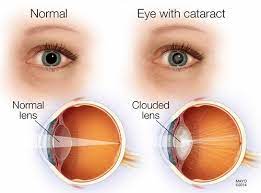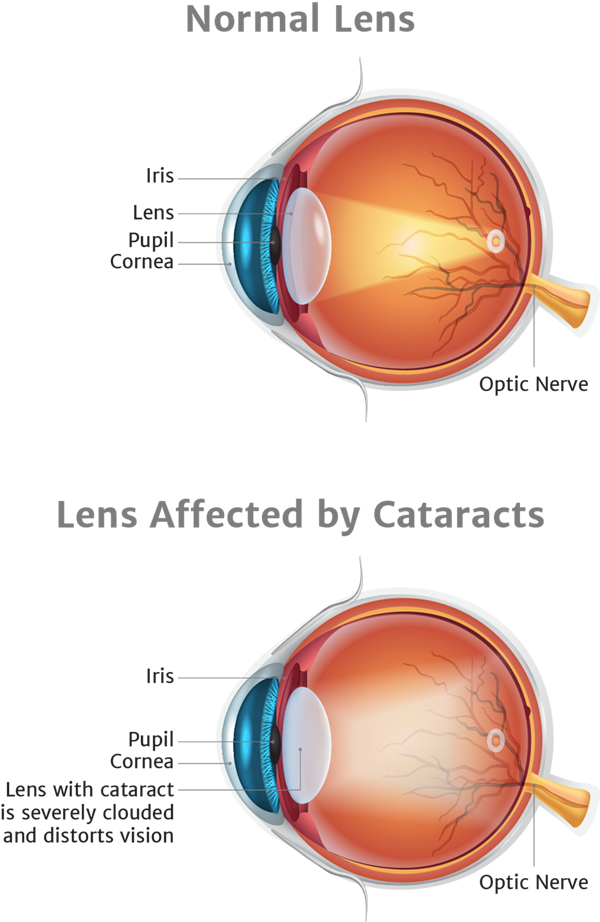CATARACT
The eye’s natural transparent lens becomes opaque and limits your ability to see clearly. The lens, a transparent structure in your eye, works like the lens in a camera. Just as a foggy camera lens makes everything dim, a cataract makes it hard for you to see clearly.
Common symptoms of a cataract:
- Blurring of vision
- Glare or light sensitivity
- Frequent changes in eyeglass prescription
- Poor night vision
- Needing a brighter light to read
- Double vision in one eye
- Fading colours.

How is a cataract detected?
A comprehensive eye examination by an ophthalmologist detects the presence and the extent of a cataract. Other conditions that could additionally compromise vision can also be detected like glaucoma , or problems involving cornea, retina and optic nerve..
How do you treat a cataract?
Surgery is the only way a cataract can be treated. It cannot be corrected with spectacles or medicines.

What should you expect from a cataract surgery?
Cataract surgery is a day care, microscopic surgery performed under anaesthesia eye drops or local anaesthesia. The cloudy lens is removed with an ultrasound handpiece and a permanent artificial intraocular lens is implanted. With the availability of latest techniques and advanced intraocular lenses one can get rid of specs for distance as well as near.
After cataract surgery, you can return immediately to almost all routine activities. Medication must be administered as per the instructions.
Advantages :
- Micro incision resulting in faster healing and quicker recovery
- Reduced surgical time
- Sutureless
- Painless surgery
- Can resume all normal activities from the next day
TYPES OF IOL’s ( Intraocular Lenses)
Monofocal IOLs/ Multifocal IOLs /Toric IOLs/ Accomdative IOLs / Trifocal IOLs / EDOF IOLs
About Us
- Dr A. Saibaba Goud is MS in Ophthalmology from Osmania University. He completed his Ph.D. in Ophthalmology in February, 1988 earning the distinction of being the first recipient of a Doctorate in Community Ophthalmology in India. Read More..
- Dr Advaith Sai Alampur completed his Fellowship in cornea and anterior segment at Sankara Nethralaya,Chennai. Read More..
Address
- Plot No 185, Road No 1 Beside Kennedy School, Opposite lane to Om Shanthi Foods, West Marredpally, Secunderabad-500026.
- 9494290777
- saijyothieyehospital@gmail.com